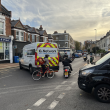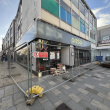One month after Wandsworth Council implemented emergency signal timing fixes at Putney Bridge junction, a comprehensive survey of 763 residents reveals the changes have done little to restore confidence in the £835,000 redesign.
The timing of this survey is significant. These responses come after the council’s October 2025 review acknowledged fundamental implementation failures, and after emergency remediation work that cost an additional £169,000. Residents have now lived with both the original problems and the attempted fixes – yet their frustration remains acute.
Over 750 people responded to a detailed nine-question survey in just 60 hours from Sunday morning to Tuesday midnight this week. The speed and scale of engagement – residents completing a complex technical questionnaire at this rate – underscores how deeply this issue resonates across the community.
Journey impact: No improvement seen
When asked how the junction redesign has affected their journeys, 90.5% of respondents report conditions are worse – 80.5% saying “much worse” and a further 10.0% saying “somewhat worse.” Just 2.7% report any improvement.
Critically, dissatisfaction spans all transport modes. Among those who primarily cycle through Putney, 72.5% report worse journeys. For pedestrians, that figure rises to 80%. Bus users report 93.7% worse journeys, while car drivers report 97.2% worse conditions.
This broad-based dissatisfaction across user groups suggests the junction’s problems extend beyond any single mode of transport.
Communication Failures Revealed
The survey exposed significant gaps in public awareness about key decisions that shaped the junction.
89.2% of respondents were unaware that TfL had rejected a ‘CYCLOPS’ junction design that would have provided significantly greater safety for cyclists. Just 4.7% knew about this decision, with another 6.1% having heard rumours but lacking details.
For a project that has had such profound impact on daily life across Putney, this near-total lack of awareness about a critical design decision points to substantial communication failures. Whether residents would have supported or opposed the CYCLOPS design, the fact that so few even knew it was considered raises questions about transparency in the decision-making process.
Consultation absence still resonates
The survey also confirmed deep frustration about the absence of broad public consultation before construction began.
80.4% of respondents called this “unacceptable,” saying residents should have been consulted. Just 9.1% found it reasonable for a technical project to proceed without public input.
This reaction is particularly notable given the multiple factors that contributed to limited consultation: TfL’s veto power over several proposed designs, time pressure to secure High Street Fund money before the deadline, and COVID disruptions during the planning process. While these factors explain how consultation gaps occurred, they clearly have not diminished residents’ view that this represents a failing by the council.
The TfL veto question
Views on Transport for London’s veto power over junction designs proved more divided, though a plurality oppose it.
39% said local councils should have final say on their own roads. A further 31.9% accept TfL veto power but want a formal challenge or appeal process. Just 11.6% support TfL’s current level of control without qualification.
17.5% said they don’t know enough about how this governance structure works – a figure that highlights the complexity of London’s transport decision-making and perhaps the need for greater public understanding of these power relationships.
Accountability: A trust gap for the council
When asked who should be held primarily accountable for signals that weren’t programmed as designed, causing 10-21 seconds of lost green time per cycle, responses revealed a notable pattern.
47.3% said responsibility should be shared across all parties. But among those assigning primary accountability to a specific entity, Wandsworth Council led at 23.7%, followed by Transport for London at 15.8%.
This split – with the council bearing the largest share of specific accountability even though a plurality favour shared responsibility – points to a trust gap the council will need to address. Residents want to see the council take ownership of what went wrong, even as they recognise TfL’s role in the failures.
The Hammersmith Bridge Question
The survey tested the council’s explanation that Hammersmith Bridge closure contributed to Putney’s traffic problems, revealing a pattern that reflects the complex reality of traffic networks.
Responses were divided: 34.7% found this “very convincing,” while 29.6% found it “somewhat convincing.” However, 26.6% found the explanation “not convincing,” noting that available data shows minimal Hammersmith Bridge traffic came to Putney.
This split makes sense when considering how traffic systems work. The Hammersmith Bridge closure genuinely did redistribute traffic patterns across southwest London – affecting arrival timing, direction patterns, and signal coordination even without dramatically increasing vehicle counts through Putney. Traffic engineering research shows that network disruptions create “cascading effects” where problems propagate in ways disproportionate to the actual vehicle numbers.
But recognising this network effect doesn’t excuse the junction’s fundamental implementation problems. Both things can be true: Hammersmith Bridge closure disrupted the broader traffic pattern AND the junction redesign has serious flaws independent of those disruptions. The fact that 90% report worse journeys suggests the junction’s own problems are substantial regardless of external factors.
What residents want: Action, not closure
Perhaps most striking is what residents want to happen next. They were asked to select up to two actions they’d most like to see:
- 51.8% want the council to revisit whether better designs are now possible
- 42.6% want focus on fixing the signal timing and monitoring results
- 38.5% want a Task & Finish Group to investigate what went wrong and recommend improvements
- 23.2% want a residents’ oversight group for future transport projects
- 8.8% want TfL to publish formal criteria for approving/rejecting designs
Critically, just 1.7% selected “accept the current situation and move on.”
The message is clear: residents are not prepared to simply accept the current situation. They want to see both immediate practical fixes and longer-term accountability measures. The demand for a Task & Finish Group – supported by nearly 40% – indicates significant appetite for a formal investigation into what went wrong and how to prevent similar failures.
What this means for Thursday’s committee meeting
These findings arrive just two days before the Transport Overview and Scrutiny Committee meets on Thursday, November 20th. The survey data provides the committee with a comprehensive picture of resident views – not in the immediate aftermath of the failed launch, but after months of living with the changes and after attempted remediation work.
The results suggest several questions the committee may wish to pursue:
On implementation: Who made the decision to program signals differently than designed? Why were they not adjusted sooner when problems became apparent?
On TfL’s role: Why has TfL not attended public meetings to explain its rejection of the CYCLOPS design? What formal process exists for residents or the council to challenge TfL veto decisions?
On communication: How can the council ensure residents have genuine awareness of and input into major transport projects that affect their daily lives?
On next steps: Given that just 1.7% of residents want to move on, what concrete actions will the council take to address continuing dissatisfaction?
The committee has the opportunity to provide the accountability and forward planning residents are clearly demanding.
Results by mode of transport
We have also analysed the result by the mode of transport people use and discovered some interesting similarities and differences.
Survey methodology
The survey was conducted from 6am Sunday, November 16 through midnight Tuesday, November 18, 2025. It consisted of nine questions covering junction awareness, accountability, and desired actions.
763 people completed the full survey. 93% of respondents live in Putney, with 4% from elsewhere in Wandsworth and 3% from elsewhere in London.
Respondents use various transport modes: 36.1% use a fairly even mix of modes, 23.3% primarily drive, 17.1% primarily walk, 16.6% primarily use buses, and 6.7% primarily cycle.
The survey was distributed through Putney.news, with promotion on the publication’s email list and social media channels. It used standard survey methodology with clear question wording and response options. Results are weighted equally per respondent regardless of transport mode or location.
Statistical Note on Sample Reliability
With 763 responses from a population estimated at approximately 15,000 regular junction users, this survey achieves a margin of error of ±3.5% at 95% confidence level. This means we can be 95% confident that the true population values fall within 3.5 percentage points of the reported figures.
For context: if the true proportion of residents who find journeys worse is 90.5% (as found), we can be 95% confident the actual population value lies between 87% and 94%.
The sample size is more than sufficient for robust conclusions about overall resident sentiment, though care should be taken when examining smaller subgroups (such as the 51 cyclists, where margins of error are larger).
The survey’s full results are available upon request.










